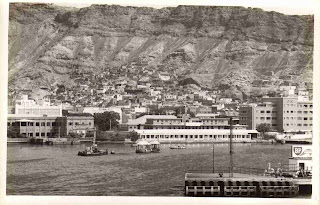CHRISTIAAN SNOUCK HURGRONJE
Christiaan Snouck Hurgronje (8 February 1857 – 26 June 1936) was a Dutch scholar of Oriental cultures and languages and Advisor on Native Affairs to the colonial government of the Netherlands East Indies (now Indonesia). He was a Dutch spy and masquerading as a Muslim. He was the first to record the Hajj in Makkah. He was discovered and fled the scene, leaving his recordings of the Hajj in Makkah. His films were recovered.http://en.wikipedia.org/wiki/Christiaan_Snouck_Hurgronje
HAJJ 1885
http://www.youtube.com/watch?v=iGZlJ-CH3Sk
 |
| Hajj 1885 by CS Hurgronje |
 |
| Masjidil Haram in Makkah flooded 1941 AD Photo from Umi Kalthom bt Mohd Yunus @ Wan Teh, Kg Melayu Batu Uban, Penang. |
 |
| Masjidil Haram in Makkah 1372 Hijrah. Photo from Umi Kalthom bt Mohd Yunus @ Wan Teh, Kg Melayu Batu Uban, Penang. Arabic numerals (٠ - ١ - ٢ - ٣ - ٤ - ٥ - ٦ - ٧ - ٨ - ٩) |
MATTERS MUSLIM.
"Assalamu-Alaikoum!"
News from Jeddah
His Excellency Sir Hugh Clifford announced, among the prominent Muslims from Malaya who are now in the Hejaz to perform the pilgrimage, are:
Inche Sawiah, widow of the late Sultan Sir Idris of Perak
Dato Muda Mentri of Perak
Inche Mohamed Salleh, Settlement Officer, Taiping
Inche Tajul Arus, Land Officer, Bandar Bharu, Kedah
Dato' Dalam of Trengganu
To' Puan Chu, widow of the late Dato' Laxamana of Perak
Inche Osman, late Assistant Collector of Land Revenue, Batu Pahat
Inche Mohamed Rajab of the Treasury, Alor Star, Kedah
Inche Mohamed bin Abdul Samad of the Ho Hong Bank, Batu Pahat
Demang Abdul Ghani and his son Inche Mahmud, Sanitary Inspector, Malacca.
The number of pilgrims, according to a letter received by Sir Hugh Clifford on 3 June 1927 from Jeddah, are:
from the Netherland East Indies over 50,000
from Malaya over 12,000
from India, Egypt and other countries over 30,000 each
from Turkey 15,000
There were no pilgrims from Turkey since the Great War.
There were no pilgrims from Persia.
Comparatively speaking, Malaya sends the biggest percentage of pilgrims every year.
 |
| Disembark from Hajj 1953 steamer (from YouTube video) |
The Makkah Diaries
http://www.youtube.com/watch?v=q7q_LcqbvKI
NATIONAL GEOGRAPHIC
Inside Makkah
http://www.youtube.com/watch?v=PWhPSk5pfHg
ABDUL BASIT ABDUL RAHMAN
Amalan Haji Bahagian 1
http://www.youtube.com/watch?v=aG-g-BhhTn0
Amalan Haji Bahagian 2
http://www.youtube.com/watch?v=BLK9mGzsvxI
USTAZ FATHUL BARI MAT JAHYA
Haji Mabrur 2 (1/4)
http://www.youtube.com/watch?v=mzlRKIJU-5k
Haji Mabrur 2 (2/4)
http://www.youtube.com/watch?v=nOPy152t1L8
Haji Mabrur 2 (3/4)
http://www.youtube.com/watch?v=tkrLrUhG3fA
Haji Mabrur 2 (4/4)
http://www.youtube.com/watch?v=Q5cWpilh8tQ













































